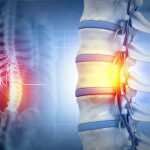About 1 in 4 women who give birth in the UK have a C-section, the majority of these are emergency procedures whilst a growing number of mothers globally are increasingly opting for C-sections, known as an “elective” c-section*.
No matter what type of birth you’re planning (and hoping) for, you shouldn’t rule out the possibility of a Caesarean section, with this in mind we’ve put together this easy-to-read post so you’re more informed and aware of this increasingly common procedure and the compatibility with stem cell banking.
What is a c-section?
A Caesarean section (C-section) is a surgical procedure for delivering a baby through abdominal and uterine incisions, the cut is made across the abdominal area (tummy) slightly below the bikini line. There are four main types of procedure:
- Elective Caesarean sections – an elective caesarean is planned ahead of your due date, often because the mother (or baby) has an underlying medical condition.
- Unplanned caesarean sections – these happen when the mother becomes too tired or labour takes too long. They can also take place if the expectant mother goes into labour before her estimated delivery date.
- Urgent caesarean sections – an urgent caesarean occurs when complications occur during pregnancy or labour; these complications are not life-threatening but can disrupt the usual process.
- Emergency caesarean sections – healthcare professionals perform emergency caesareans when life-threatening complications occur, which mean that baby needs to be born as quickly as possible.
Why do people have c-sections?
In many cases, c-sections are a necessity due to some kind of complication in the pregnancy. In order to deliver the baby safely, your birthing team might suggest a caesarean as the best course of action.
Other women choose to have a caesarean for non-medical reasons – perhaps because they don’t feel ready to experience the pain of labour or have been put off by a previous pregnancy.
Simply ask your midwife or doctor about a caesarean if it is not for medical reasons. They can explain the advantages and disadvantages so you can make an informed decision.
How are c-sections performed?
Most c-sections are performed under spinal or epidural anaesthetic. The mother is awake, but the lower half of the body is numb to prevent any pain.
During the c-section, your birthing team will place a screen across your body so you can’t see the procedure. Your doctor will then make a cut about 10-20cm long across your lower tummy, and your birthing team will help to deliver your baby.
In most cases, you and your birthing partner will have the chance to see and hold your baby straight away.
The whole operation can take anywhere between 40 to 50 minutes.
Are c-sections safe? What are the risks?
A caesarean is generally considered a safe procedure, but it does come with risks and potential complications from infections to blood clots, excessive bleeding to permanent damage to nearby areas such as the bladder.
There is also the chance your baby will struggle with temporary breathing difficulties, and they may receive a little cut when the womb is open.
How do you recover from a c-section?
Recovering from a c-section almost always takes longer than recovery from a standard vaginal delivery, and you will always have a permanent scar.
You might need to stay in hospital for as much as 3 to 4 days, whereas other mums get to leave after 1 or 2 days with a vaginal birth.
The doctor may advise you to avoid some activities – including driving – until your postnatal check-up 6 weeks after the birth.
Are c-sections compatible with cord blood banking?
In many cases, the answer is yes. In theory, cord blood collections are completely compatible with c-sections.
In fact, one study has shown that a c-section actually led to a higher total nucleated cell (TNC) count and greater blood volume, although other papers have suggested the reverse is true.[2]
Likewise, a scientific paper published a few years ago compared cord blood collections between one group, who received a c-section, and another, who had a vaginal birth. Researchers found the c-section group had a bigger collection, with a higher TNC count.[3]
However, in the event of an emergency or urgent caesarean section, a cord blood collection may not be possible as the priority must be making sure that your baby arrives safely and a delay in collection can lead to a smaller sample.
With our TotiCyte processing method, however, this smaller sample can still prove therapeutically useful. That’s because TotiCyte preserves three times more stem cells at the point of treatment than any other method, maximising your child’s treatment opportunities and ensuring you can store stem cells alongside most major birth options.
References
[1] BMJ 2018; 363 doi: https://doi.org/10.1136/bmj.k4319 (Published 12 October 2018)
[2] Nunes et al. ‘Association between maternal and fetal factors and quality of cord blood as a source of stem cells’, Brazil Brazilian Journal of Hematology and Hemotherapy
[3] Gynecol Obstet Invest. 2002;54(2):73-7. Differences in umbilical cord blood units collected during cesarean section, before or after the delivery of the placenta. Pafumi C1, Farina M, Bandiera S, Cavallaro A, Pernicone G, Russo A, Iemmola A, Chiarenza M, Leonardi I, Calogero AE, Calcagno A, Cianci A.
*https://www.thelancet.com/journals/lancet/article/PIIS0140-6736(18)31928-7/fulltext
For the latest information on C-sections:
- https://www.nhs.uk/conditions/caesarean-section/
- https://www.birthrights.org.uk/factsheets/right-to-a-c-section/
Request a Welcome Pack
Find out more about cord blood banking by downloading a Welcome Pack now.








